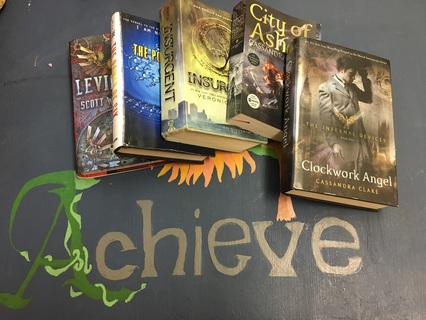 I would like to thank publishers for making books cool for young people. I recognize the problems with that sentence, particularly as a writer, but I don’t take it back. Instead, I cast my mind back to 1996. I was in grade six, and an avid reader. I distinctly remember that one day when I was reading a novel at lunch, a girl came up to me and told me “Just so you know, reading isn’t cool anymore.” There is obviously so much wrong with that statement, but what was strange about it was the tone. It wasn’t meant to tease, or bully; it was a statement of fact, spoken with concern, in case I hadn’t heard. There was no social media back then; if you wanted to know what was trending, someone actually had to tell you. Actually, there were a lot of things that we didn’t have back in 1996. Children’s fiction had a wealth of good, classic pieces, but teen fiction, such as it existed, was pretty terrible. (Have you read a Sweet Valley Twins book recently? Don’t.) The revolution to young readership that was Harry Potter and the Philosopher’s Stone hadn’t yet been published. So it’s unsurprising that my ill-informed classmate would think that reading wasn’t cool. It would be a nice narrative to say that writers are wholly responsible for the books that we read, but ultimately the way we read books and the way we buy books are inextricably linked. Writers can change the way we think and feel, but the choice of what book we pick up is out of their hands. Books are consumer goods like anything else; we buy them because they are well advertised, or because our friend has one and we want one, or because everyone around us has read it and we can’t be left out. Young people read differently now because publishers are selling to them. They have been offered books to buy that are marketable, desirable, and worthwhile, and just like any other good, they have bought and consumed them. This isn’t new, either. Books have been commodities since the 19th Century. Charles Dickens was not only a writer; he was an editor, a publisher, and a powerful marketer of his own material. He was good at it – he had to be. On the negative side, Mundie’s Circulating Library was the single largest library, and therefore purchaser of books, in England; if its founder, Charles Mundie, didn’t find your book “appropriate”, you had very little chance of selling it. We judge books by their covers, and we always have. For all their success with young adult fiction, modern publishers still miss things too. A recent notable example is Andy Weir’s The Martian, which remained self-published nearly up until it was signed into a movie contract. And while teens now have a wealth of thoroughly decent reading material to choose from, the target is moving. Readers that were once content to have decent fiction will want great fiction. Young people are smart – they want smart books, and they don't need to rely on contemporary publications to find it. Once a year, my class does an assignment called “The Classics Project.” Students choose from my “Shortlist of Classic Reads” – basically, a list of books that I like – and they do a presentation on the book, including an explanation of why this book remains “a classic.” Inevitably, every year, at least one student will come up to me, holding Stoker’s Dracula, or a tome of unabridged Sherlock Holmes, or Pride and Prejudice, and they will say “Madame Perrella, this book – it’s really good!” It is. Thankfully, it’s also still in print.
0 Comments
Leave a Reply. |
Author
Jane Perrella. Teacher, writer. Expert knitter. Enthusiast of medieval swordplay, tea, Shakespeare, and Batman. Archives
June 2019
Categories |
 RSS Feed
RSS Feed
